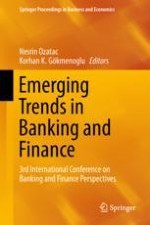This volume presents current developments in the fields of banking and finance from an international perspective. Featuring contributions from the 3rd International Conference on Banking and Finance Perspectives (ICBFP), this volume serves as a valuable forum for discussing current issues and trends in the banking and financial sectors, especially in light of the global economic challenges triggered by financial institutions. Using the latest theoretical models, new perspectives are brought to topics such as e-finance and e-banking, Islamic banking, capital flight, bank efficiency, risk assessment, bankruptcy, investment diversification, and insider trading. Offering an opportunity to explore the challenges of a rapidly changing industry, this volume will be of interest to academics, policy makers, and scholars in the fields of banking, insurance, and finance.
